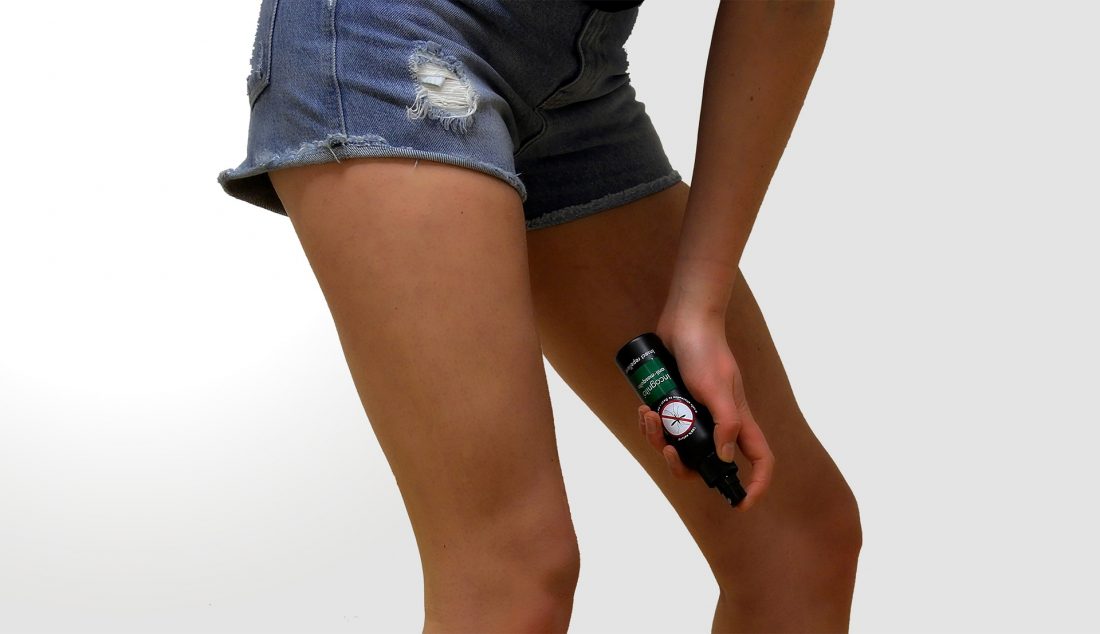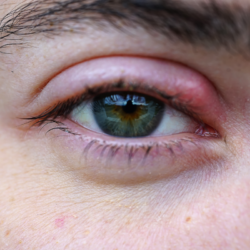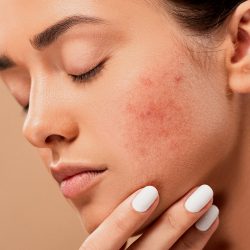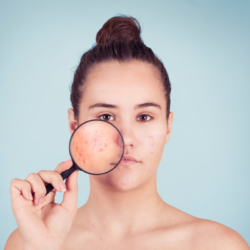It’s important to know how to choose your mosquito repellent. There are several criteria to take into account:
- Geographical area: temperate zone, tropical zone, etc.
- Types of mosquito: Aede (Tiger), Culex, etc.
- Diseases: malaria, dengue fever, chikungunya, etc
- Users: adults, children (age), pregnant women.
While mosquitoes in Europe are mainly synonymous with sleepless nights and itching, other tropical species, such as the tiger mosquito, are vectors of serious diseases such as malaria, the Zika virus, dengue fever, chikungunya and yellow fever.
Understanding mosquitoes
To choose an effective mosquito repellent, it’s essential to understand the characteristics and behaviour of different types of mosquito, and why they bite.
Types of mosquitoes and their behaviour
There are over 3,500 species of mosquito in the world, but only a few are of any significance to humans. Among the best known are the Aedes mosquito, known for transmitting diseases such as dengue fever and the Zika virus, and the Anopheles mosquito, which carries malaria.
Each species of mosquito has unique breeding and feeding habits and preferences. For example, Aedes aegypti mosquitoes prefer to lay their eggs in small collections of stagnant water near human dwellings, while Anopheles mosquitoes tend to breed in natural bodies of water.
Their activity also varies depending on the species: some are more active during the day, while others bite mainly at dawn or dusk. This knowledge is crucial if effective prevention strategies are to be put in place.
Why do mosquitoes bite us?
In mosquitoes, it is the female that bites. Filled with fertilised eggs, she needs the proteins in the blood to bring them to maturity. To find its victim, the mosquito first uses the release of CO2 to identify a potential target. Then there are other parameters, such as sweat, lactic acid (which gives you aches and pains) and heat. So if you’re sweating, you’re more likely to be taken as a victim.
Once positioned, the female arthropod will deploy her syringe and penetrate the epidermis to inject an anticoagulant into a capillary to thin the blood… before sucking it out. It is this substance that causes a secretion of histamine (among other things) and de facto leads to the desire to scratch.
Because injecting saliva can transmit parasites, it’s important not to protect yourself lightly.
Different mosquito repellents recommended for different uses
DEET outdoors and in tropical areas
- DEET is a synthetic repellent, recognised as the most effective molecule to date
- recommended for tropical zones, particularly in areas with disease-carrying mosquitoes.
- DEET concentration for maximum effectiveness 50
- Not recommended for children under 12 and pregnant women at 50% dosage. 30% dosage recommended
- When outdoors, choose your Deet mosquito repellent
Icaridine (or KBR3023) against malaria
Icaridine is a synthetic repellent, a relatively recent molecule with recognised efficacy, particularly on Anopheles mosquitoes, the vector of malaria
- Not recommended for children under 30 months, but no other contraindications are known to date.
- Recommended for use in tropical areas, particularly where malaria is present, as an alternative to DEET.
- 20 to 25% concentration
IR 3535 for temperate zones
IE 3535 is a synthetic repellent with proven effectiveness against mosquitoes in temperate and tropical zones.
- Not recommended for children under 6 months, authorised for pregnant women
- Recommended at high concentration for tropical zones and lower concentration for temperate zones
- 10 to 35% concentration
Permethrin for impregnating clothing and mosquito nets
- Synthetic pyrethrin
- Derived from Chrysanthemum or Tanacetum cinerariifolium
- reserved forimpregnating clothing and mosquito nets.
- Insecticidal and repellent properties
The different types of mosquito repellent
Which mosquito repellent should I choose for infants and pregnant women?
To protect yourself and your baby without risk to either your pregnancy or your child, we advise you to pack natural solutions .
However, be careful about using essential oils if you’re a novice, in which case you can turn to the solutions suggested below:
- Hydrolats (or floral waters) still have the same functions as the essential oil they were used to produce, but they are much gentler and have no contraindications. However, their therapeutic action is weaker.
We recommend using :
- Geranium hydrosol: like the essential oil, its sweet flowery scent will have a repellent action. You can apply it several times a day, both to your clothes and to your own or your baby’s skin.
- Lavender hydrosol: perfect for complementing the repellent action of geranium. We recommend that you mix the two for even greater effectiveness.
If you want to go further, you can make this complete recipe with enhanced repellent action:
Mix in a sterilised 200 ml spray bottle (tinted glass if possible):
- 10 ml white vinegar (repellent action)
- 1 tablespoon vegetable glycerine
- 80 ml geranium hydrosol
- 80 ml lavender hydrosol
- 30 ml undenatured alcohol 90 (if you can find it) or vodka (emulsifier, astringent and preservative)
You can apply this mixture several times a day to baby’s clothes or skin, taking care not to spray the areas near the eyes that could come into contact with the mouth
Follow this link to find out more about mosquito repellent for your baby
Which mosquito repellent should I choose for temperate zones?
If you live in a temperate zone, opt for a less powerful repellent than DEET, such as R3535 with Apaisyl mosquito repellent. It is sprayed onto the skin or your clothes. This repellent will protect you from mosquitoes, wasps, ticks and even lice! What’s more, this product leaves no stains or marks on your clothes, and is effective for up to 2 months after spraying, even after 5 washes! It’s also odourless, making it an ideal repellent for the whole family, even children over the age of 2.
Which mosquito repellent should I choose for tropical areas?
If you’re planning to travel to a tropical country, we recommend Insect Ecran tropical zone repellent, which contains Deet. It is designed for use in tropical zones, as it has a wider range of action than other repellents on the market.
It acts against tiger mosquitoes and Anopheles mosquitoes, which are responsible for the spread of malaria. Unlike many mosquito repellents used in temperate zones, this repellent works for 8 hours after spraying. It is applied directly to the skin, without any danger or risk of reaction. It is suitable for everyone, including pregnant women and children over the age of 2. You can also complete your protection with a mosquito repellent-impregnated bracelet for optimum protection.
Are mosquito repellent bracelets effective?
Yes, mosquito repellent bracelets can be effective in repelling mosquitoes. However, their effectiveness can vary depending on a number of factors, such as the active ingredients used, the length of protection offered and the way the bracelet is used.
Mosquito repellent bracelets generally contain repellent ingredients such as citronella, DEET or natural essential oils. These substances emit an odour that deters mosquitoes from approaching. However, it is important to note that the effectiveness of these bracelets may be limited compared with other methods of protection, such as spray or lotion repellents.
The length of protection provided by mosquito repellent bracelets can also vary. Some bracelets offer protection for several hours, while others can last for several days. It is advisable to follow the manufacturer’s specific instructions for optimum protection.
Spray your permethrin-based mosquito repellent on the mosquito net and/or clothing
To complete the protection, it’s advisable to coat your clothes with permethrin. There are 2 ways of doing this:
1 – Spray, lay out your clothes and spray. Easy to do on the road. For example, the Aerosol cinq sur cinq 150ml will protect you by spraying.
2- Dilute. Mix the contents of the bottle with water in a basin and trick your clothes. For example, Insect Ecran clothing mosquito repellent solution for soaking is recommended for curtains, especially mosquito nets.
For more information, don’t hesitate to ask your pharmacist for advice..
New innovations in repellents
Technological advances and recent research have led to significant innovations in the field of mosquito repellents. These advances aim to improve the effectiveness of repellents while reducing their harmful effects on health and the environment.
Recent research
The latest research focuses on understanding the mechanisms by which mosquitoes detect their prey. Scientists are studying the chemical compounds in human skin that attract mosquitoes, as well as how these insects react to different substances. This deeper understanding paves the way for the creation of more targeted and effective repellents.
In addition, the study of mosquito behaviour has led to the development of more sophisticated strategies for repelling them. For example, research has shown that certain sound frequencies can disturb mosquitoes and reduce their tendency to bite.
Technological advances
On the technological front, major innovations have been made. Among these, nanotechnologies occupy a prominent place. Nanoparticle-based repellents are currently being developed. These nanoparticles can be designed to release the active ingredients slowly, prolonging the duration of protection while minimising the quantity of chemical substances used.
Another notable advance is the use of artificial intelligence to create personalised repellent formulations. By analysing data on individual preferences and reactions to different compounds, it is possible to develop tailor-made repellents, optimised for each user.
Electronic devices have also benefited from technological advances. New models of anti-mosquito lamps, for example, are more effective at attracting and eliminating these insects. Some of these devices use special LEDs or combinations of light and heat to imitate human signals more convincingly.
Finally, advances in biodegradable and eco-friendly materials have led to the development of more environmentally-friendly repellents. These products seek to reduce the ecological impact while offering effective protection against mosquitoes.
These innovations represent a significant step forward in the fight against mosquito-borne nuisance and disease. By combining in-depth scientific research with cutting-edge technologies, future repellents promise to be both more effective and safer for users and the environment.
How do I choose a pet repellent?
When it comes to protecting our homes against mosquitoes, it’s important to consider the safety of our pets. Repellents designed for humans may not be safe for pets, and vice versa. Here are some essential precautions to bear in mind.
Precautions to take with animals
- Choosing products specifically for pets: It is crucial to use repellents specially designed for pets. Human products, particularly those containing DEET, can be toxic to pets, especially cats and dogs, who can ingest them by licking themselves.
- Consult a vet: Before applying any type of repellent to an animal, it is advisable to consult a vet. Professionals can recommend appropriate products and advise on the correct way to use them.
- Beware of essential oils: Although some essential oils are used as natural repellents for humans, they can be dangerous for animals, especially cats. Cats, for example, have a limited ability to metabolise certain compounds present in essential oils, which can lead to toxicity.
- Read and follow instructions: It is important to read labels carefully and follow instructions for use. Never assume that a product is safe for animals simply because it is natural or safe for humans.
- Post-application monitoring: After applying a repellent to an animal, monitor it for any signs of an adverse reaction, such as skin irritation, itching or signs of discomfort.
- Regular cleaning: Pets should be regularly cleaned and inspected for ticks and other parasites, especially after spending time outdoors. This helps reduce the need for chemical repellents.
- Use of non-chemical preventive methods: Methods such as screens on windows, restricting animal access to certain areas during peak mosquito activity times, and environmental management (such as eliminating stagnant water) are also effective ways of protecting animals without resorting to chemicals.
By taking these precautions, you can help protect your pets from mosquitoes safely and effectively. It’s always best to opt for gentle solutions and consult a professional about your pet’s specific needs.







